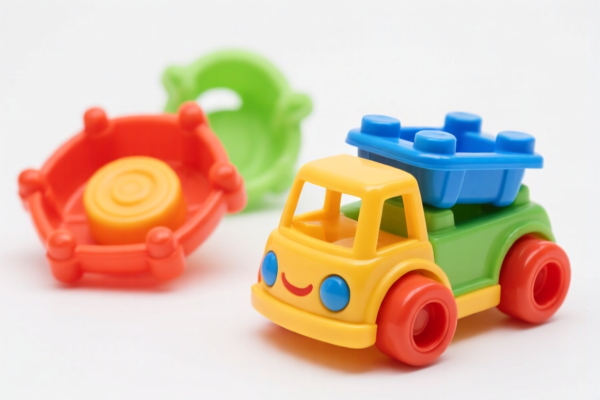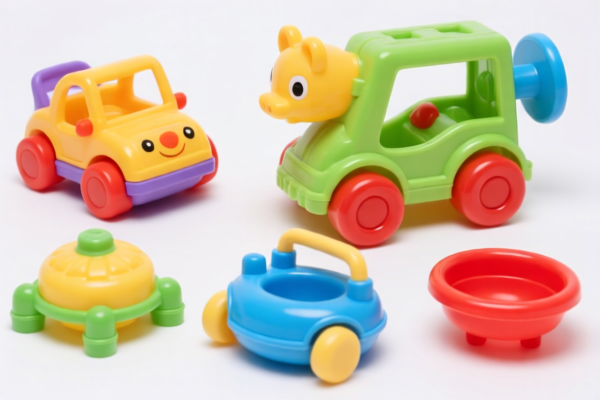| HS Code | Official Doc | Tariff Rate | Origin | Destination | Effective Date |
|---|---|---|---|---|---|
| 9503000071 | Doc | 30.0% | CN | US | 2025-05-12 |
| 9503000073 | Doc | 30.0% | CN | US | 2025-05-12 |
| 3926901000 | Doc | 40.9% | CN | US | 2025-05-12 |
| 3926909910 | Doc | 42.8% | CN | US | 2025-05-12 |
| 3924104000 | Doc | 33.4% | CN | US | 2025-05-12 |
| 3924905610 | Doc | 40.9% | CN | US | 2025-05-12 |
| 7326908688 | Doc | 82.9% | CN | US | 2025-05-12 |
| 7326908688 | Doc | 82.9% | CN | US | 2025-05-12 |
| 7325995000 | Doc | 82.9% | CN | US | 2025-05-12 |
| 7325991000 | Doc | 80.0% | CN | US | 2025-05-12 |




Children's Plastic Tool Set
A children's plastic tool set is a toy designed to mimic adult hand tools, typically constructed from brightly colored plastic. These sets aim to encourage imaginative play, develop fine motor skills, and introduce basic concepts of construction and repair.
Material
The primary material is plastic, commonly polypropylene or polyethylene. These plastics are chosen for their durability, light weight, and affordability. Some sets may incorporate metal components for realistic detailing, but the core tools are usually plastic. Increasingly, manufacturers are focusing on using non-toxic, phthalate-free plastics.
Purpose
The primary purpose is recreational play, fostering creativity and role-playing. These sets allow children to imitate adult activities, promoting social development through collaborative play scenarios like building, fixing, and creating. They can also serve an educational function by introducing tool names and basic concepts of how things are assembled and disassembled.
Function
While not functional for real-world tasks, the tools are designed to resemble their adult counterparts in shape and, sometimes, basic operation. For example, a plastic screwdriver may turn a plastic screw, or a plastic wrench may fit onto a plastic nut. Some sets include battery-operated tools that provide sound and light effects to enhance realism. The function is primarily symbolic, enabling pretend play rather than actual construction or repair.
Usage Scenarios
- Role-Playing: Children often use tool sets to simulate scenarios such as home repair, construction work, or car maintenance.
- Imaginative Building: Sets can be used to build structures from other toys or household items.
- Collaborative Play: Children can work together on "projects," fostering teamwork and communication.
- Independent Play: Sets allow children to engage in self-directed play, developing problem-solving skills.
- Educational Settings: Used in preschools and early childhood education to introduce tool concepts and promote fine motor skill development.
Common Types
- Basic Hand Tool Sets: These typically include a hammer, screwdriver (often with interchangeable bits), wrench, pliers, and a measuring tape.
- Power Tool Sets: Include battery-operated drills, saws, and sanders with realistic sounds and lights. These often have interchangeable accessories.
- Construction Sets: Focus on building and include tools appropriate for construction play, such as levels, squares, and clamps. May be bundled with plastic building blocks or other construction components.
- Mechanic Sets: Simulate automotive repair, including tools like wrenches, screwdrivers, and pliers, often with toy car components.
- Gardening Sets: Include tools like trowels, rakes, and watering cans, designed for pretend gardening play.
- Themed Sets: Sets may be themed around specific professions or activities, such as carpentry, plumbing, or electrical work. These often include specialized tools relevant to the theme.
- Toolboxes/Workbenches: Many sets are packaged in a toolbox or include a miniature workbench to provide storage and a dedicated play space.
The declared goods are a children's tool set made of plastic. These sets are designed for recreational play, typically intended for children to imitate adult tool use. The application scenario is primarily indoor or outdoor play, focusing on developing children's imagination and fine motor skills.
The following HS codes are relevant based on the provided reference material:
- 9503000071: This HS code covers Tricycles, scooters, pedal cars and similar wheeled toys; dollsʼ carriages; dolls, other toys; reduced-scale (“scaleˮ) models and similar recreational models, working or not; puzzles of all kinds; parts and accessories thereof “Childrenʼs productsˮ as defined in 15 U.S.C. § 2052: Other: Labeled or determined by importer as intended for use by persons: Under 3 years of age. The '95' chapter indicates toys, games and sports equipment. '03' specifically covers wheeled toys, dolls, and related items. '000071' denotes other children’s products intended for use by children under 3 years of age.
- 9503000073: This HS code covers Tricycles, scooters, pedal cars and similar wheeled toys; dollsʼ carriages; dolls, other toys; reduced-scale (“scaleˮ) models and similar recreational models, working or not; puzzles of all kinds; parts and accessories thereof “Childrenʼs productsˮ as defined in 15 U.S.C. § 2052: Other: Labeled or determined by importer as intended for use by persons: 3 to 12 years of age. The '95' chapter indicates toys, games and sports equipment. '03' specifically covers wheeled toys, dolls, and related items. '000073' denotes other children’s products intended for use by children between 3 and 12 years of age.
- 3926901000: This HS code covers Other articles of plastics and articles of other materials of headings 3901 to 3914: Other: Buckets and pails. The '39' chapter covers plastics and articles thereof. '26' specifically covers articles of plastics. '901000' denotes other plastic articles, including buckets and pails. While not a direct match, tool sets may contain bucket-like components.
- 3924104000: This HS code covers Tableware, kitchenware, other household articles and hygienic or toilet articles, of plastics: Tableware and kitchenware: Other. The '39' chapter covers plastics and articles thereof. '24' specifically covers tableware, kitchenware, and household articles. '104000' denotes other plastic tableware and kitchenware. Some tool sets may include components resembling kitchenware.
Regarding HS codes 9503000071 and 9503000073, it is important to accurately determine the intended age group of the tool set, as this directly impacts the correct HS code selection. The total tax rate for both HS codes is 30.0%.
Customer Reviews
No reviews yet.